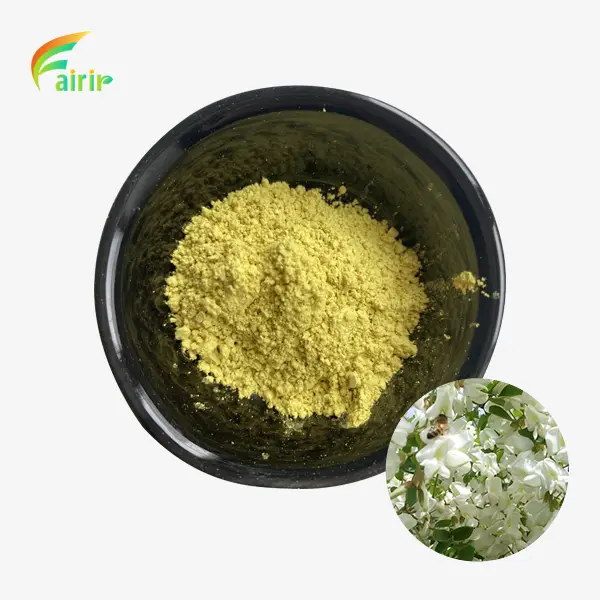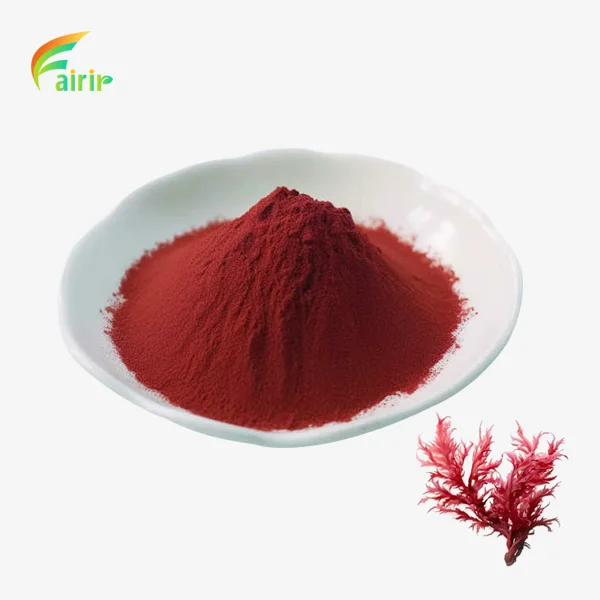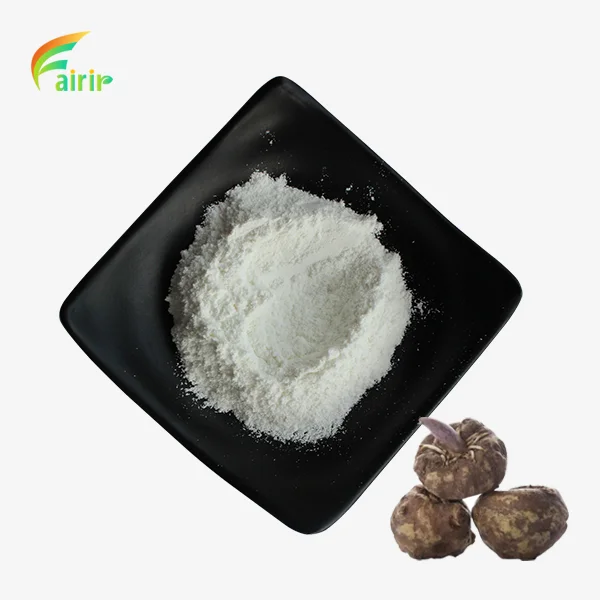What are the global standards for Squalane oil quality and purity?
Squalane oil has become increasingly popular in the cosmetic and pharmaceutical industries due to its exceptional moisturizing properties and compatibility with human skin. As demand for this versatile ingredient grows, it's crucial to understand the global standards that ensure its quality and purity. These standards not only guarantee the efficacy of squalane oil in various applications but also safeguard consumers from potential contaminants or substandard products. In this comprehensive guide, we'll explore the pharmacopeial requirements, analytical quality parameters, and regulatory standards that define high-quality squalane oil on a global scale. By examining these rigorous criteria, we'll gain insight into the meticulous processes and testing methods used to verify the purity and quality of squalane oil, ensuring its safety and effectiveness for use in cosmetics, pharmaceuticals, and other industries.

Pharmacopeial Requirements: USP and European Pharmacopoeia Purity Thresholds for Squalane Oil
United States Pharmacopeia (USP) Standards
The United States Pharmacopeia (USP) sets stringent standards for squalane oil quality and purity. According to USP guidelines, high-quality squalane oil must meet specific criteria for appearance, odor, and chemical composition. The oil should be a clear, colorless, and odorless liquid at room temperature. USP standards require squalane oil to have a minimum purity of 96%, with impurities limited to no more than 3% unsaponifiable matter. Additionally, the USP specifies that squalane oil should have a specific gravity between 0.810 and 0.820 at 25°C, ensuring consistency in density and composition across different batches. These rigorous standards help maintain the quality and efficacy of squalane oil in various applications, from skincare products to pharmaceutical formulations.
European Pharmacopoeia (Ph. Eur.) Requirements
The European Pharmacopoeia (Ph. Eur.) sets equally strict standards for squalane oil quality and purity. According to Ph. Eur. guidelines, high-grade squalane oil must meet specific criteria for physical and chemical properties. The oil should be a clear, colorless liquid with no discernible odor. Ph. Eur. standards mandate a minimum purity of 95% for squalane oil, with specific limits on related substances and impurities. The pharmacopoeia also specifies that squalane oil should have a refractive index between 1.452 and 1.458 at 20°C, ensuring consistency in optical properties. These exacting requirements help guarantee the quality and safety of squalane oil used in European markets, particularly in cosmetic and pharmaceutical applications.
Comparison of USP and Ph. Eur. Standards
While both the USP and Ph. Eur. maintain high standards for squalane oil, there are some notable differences in their requirements. The USP generally requires a slightly higher minimum purity (96%) compared to the Ph. Eur. (95%). Additionally, the USP places more emphasis on specific gravity, while the Ph. Eur. focuses on refractive index as a key quality parameter. Both pharmacopoeias agree on the importance of appearance and odor characteristics. These slight variations in standards highlight the need for manufacturers to carefully consider their target markets when producing squalane oil, ensuring compliance with the relevant pharmacopeial requirements. Despite these differences, both sets of standards serve to maintain the high quality and purity of squalane oil in global markets.
Analytical Quality Parameters: Iodine Value, Acid Value, Refractive Index, and GC/GC-MS Purity Assays
Iodine Value and Acid Value Significance
The iodine value and acid value are crucial analytical parameters for assessing the quality of squalane oil. The iodine value measures the degree of unsaturation in the oil, indicating the presence of double bonds. For high-quality squalane oil, the iodine value should be very low, typically less than 5, as squalane is a saturated hydrocarbon. A higher iodine value may suggest contamination with unsaturated compounds or incomplete hydrogenation during production. The acid value, on the other hand, measures the presence of free fatty acids in the oil. A low acid value, usually less than 0.1 mg KOH/g, indicates high purity and stability of the squalane oil. These parameters are essential for ensuring the quality and shelf-life of squalane oil in various applications, particularly in cosmetic and pharmaceutical formulations where stability and purity are paramount.
Refractive Index as a Quality Indicator
The refractive index is a critical quality indicator for squalane oil, providing insights into its purity and composition. High-quality squalane oil typically has a refractive index between 1.4520 and 1.4540 at 20°C. This narrow range ensures consistency in the oil's optical properties and serves as a quick and reliable method for quality assessment. Deviations from this range may indicate the presence of impurities or alterations in the oil's chemical structure. The refractive index is particularly useful in identifying potential adulteration or contamination of squalane oil with other substances. Regular monitoring of the refractive index throughout the production process and in the final product helps maintain the high standards required for pharmaceutical-grade and cosmetic-grade squalane oil, ensuring its efficacy and safety in various applications.
GC and GC-MS Purity Assays
Gas Chromatography (GC) and Gas Chromatography-Mass Spectrometry (GC-MS) are advanced analytical techniques used to assess the purity and composition of squalane oil with high precision. These methods can detect and quantify even trace amounts of impurities or contaminants in the oil. GC analysis typically reveals a single major peak for high-purity squalane, with any additional peaks indicating the presence of impurities or related compounds. GC-MS takes this analysis further by providing detailed information on the molecular structure of any detected impurities, allowing for their identification and quantification. Industry standards often require squalane oil to show a purity of 98% or higher when analyzed by GC or GC-MS. These sophisticated analytical techniques are essential for ensuring the highest quality standards in squalane oil production, particularly for applications in high-end cosmetics, pharmaceuticals, and medical devices where purity is paramount.
Regulatory and Certification Standards for Plant-Derived Squalane: ISO, ECOCERT, COSMOS, and GMP Practices
ISO Standards for Squalane Quality
The International Organization for Standardization (ISO) plays a crucial role in establishing global standards for squalane oil quality. ISO 9001 certification, which focuses on quality management systems, is often required for squalane oil manufacturers to ensure consistent product quality and customer satisfaction. Additionally, ISO 22716, which provides guidelines for Good Manufacturing Practices (GMP) in the cosmetics industry, is particularly relevant for squalane oil intended for cosmetic applications. This standard ensures that the production process meets stringent quality and safety requirements. For plant-derived squalane, ISO 16128 is also significant as it defines guidelines for natural and organic cosmetic ingredients. Compliance with these ISO standards demonstrates a manufacturer's commitment to producing high-quality squalane oil that meets international quality benchmarks, enhancing consumer trust and facilitating global trade in this valuable ingredient.
ECOCERT and COSMOS Certifications
ECOCERT and COSMOS certifications are crucial for plant-derived squalane oil, particularly in the natural and organic cosmetics market. ECOCERT, a globally recognized certification body, sets strict standards for organic and natural cosmetic ingredients. For squalane oil to receive ECOCERT certification, it must be derived from plant sources using eco-friendly extraction methods, with no synthetic additives or genetically modified organisms (GMOs). COSMOS (COSMetic Organic Standard) certification goes a step further, harmonizing various European standards for organic and natural cosmetics. COSMOS-certified squalane oil must meet rigorous criteria for organic content, sustainable sourcing, and environmental impact throughout its production cycle. These certifications not only validate the natural and organic status of squalane oil but also ensure its compliance with strict ecological and ethical standards, making it highly desirable for conscious consumers and brands committed to sustainability in the beauty industry.
GMP Practices in Squalane Production
Good Manufacturing Practices (GMP) are essential in ensuring the quality, safety, and consistency of squalane oil production. GMP guidelines cover all aspects of the manufacturing process, from raw material sourcing to packaging and distribution. For squalane oil, GMP practices include stringent quality control measures at every production stage. This involves regular testing of raw materials, monitoring of production parameters, and thorough documentation of all processes. GMP-compliant facilities for squalane production must maintain clean and controlled environments to prevent contamination. Additionally, GMP requires comprehensive staff training and the implementation of robust quality management systems. Adherence to GMP practices is particularly crucial for squalane oil intended for use in pharmaceuticals and high-end cosmetics, where product purity and consistency are paramount. By following GMP guidelines, manufacturers can ensure that their squalane oil meets the highest quality standards, providing assurance to customers and regulatory bodies alike.
Conclusion
The global standards for squalane oil quality and purity are comprehensive and rigorous, encompassing pharmacopeial requirements, analytical parameters, and regulatory certifications. These standards ensure that squalane oil meets the highest quality benchmarks for use in cosmetics, pharmaceuticals, and other industries. By adhering to these global standards, manufacturers can produce squalane oil that is safe, effective, and consistent in quality. As the demand for high-quality, plant-derived squalane continues to grow, these standards will play an increasingly important role in maintaining product integrity and consumer trust in the global marketplace.
Discover Premium Plant Extracts with Shaanxi Fairir Biotech
At Shaanxi Fairir Biotech Co., Ltd. we are committed to meeting and exceeding these global standards in our production of high-quality plant extracts, including squalane oil. Our state-of-the-art GMP-certified facility, equipped with advanced extraction and analytical equipment, ensures that our products meet the most stringent quality and purity requirements. We invite you to experience our commitment to excellence and innovation in plant-based ingredients. For more information or to discuss your specific needs, please contact us at sales@fairirbiotech.com.
FAQ
Q: What is the minimum purity requirement for high-quality squalane oil?
A: According to USP standards, high-quality squalane oil should have a minimum purity of 96%, while the European Pharmacopoeia requires a minimum of 95%.
Q: How is the purity of squalane oil typically measured?
A: Purity is often measured using Gas Chromatography (GC) or Gas Chromatography-Mass Spectrometry (GC-MS), with industry standards typically requiring 98% or higher purity.
Q: What certifications are important for plant-derived squalane oil?
A: Important certifications include ISO standards, ECOCERT, and COSMOS, which validate the natural and organic status of the oil and ensure compliance with ecological and ethical standards.
Q: Why is the refractive index important for squalane oil quality?
A: The refractive index serves as a quick and reliable quality indicator, with high-quality squalane oil typically having a refractive index between 1.4520 and 1.4540 at 20°C.
Q: What are Good Manufacturing Practices (GMP) in squalane production?
A: GMP in squalane production involves stringent quality control measures throughout the manufacturing process, including raw material testing, production monitoring, and comprehensive documentation.
References
1. United States Pharmacopeia. (2021). "Squalane Monograph." USP 44-NF 39.
2. European Pharmacopoeia Commission. (2020). "Squalane." European Pharmacopoeia 10.0.
3. International Organization for Standardization. (2019). "ISO 16128: Guidelines on technical definitions and criteria for natural and organic cosmetic ingredients and products."
4. ECOCERT Group. (2021). "ECOCERT Standard for Natural and Organic Cosmetics."
5. COSMOS-standard AISBL. (2020). "COSMOS-standard: Cosmetic Organic and Natural Standard."
6. World Health Organization. (2014). "WHO good manufacturing practices for pharmaceutical products: main principles." WHO Technical Report Series, No. 986, Annex 2.











_1751965378790.webp)